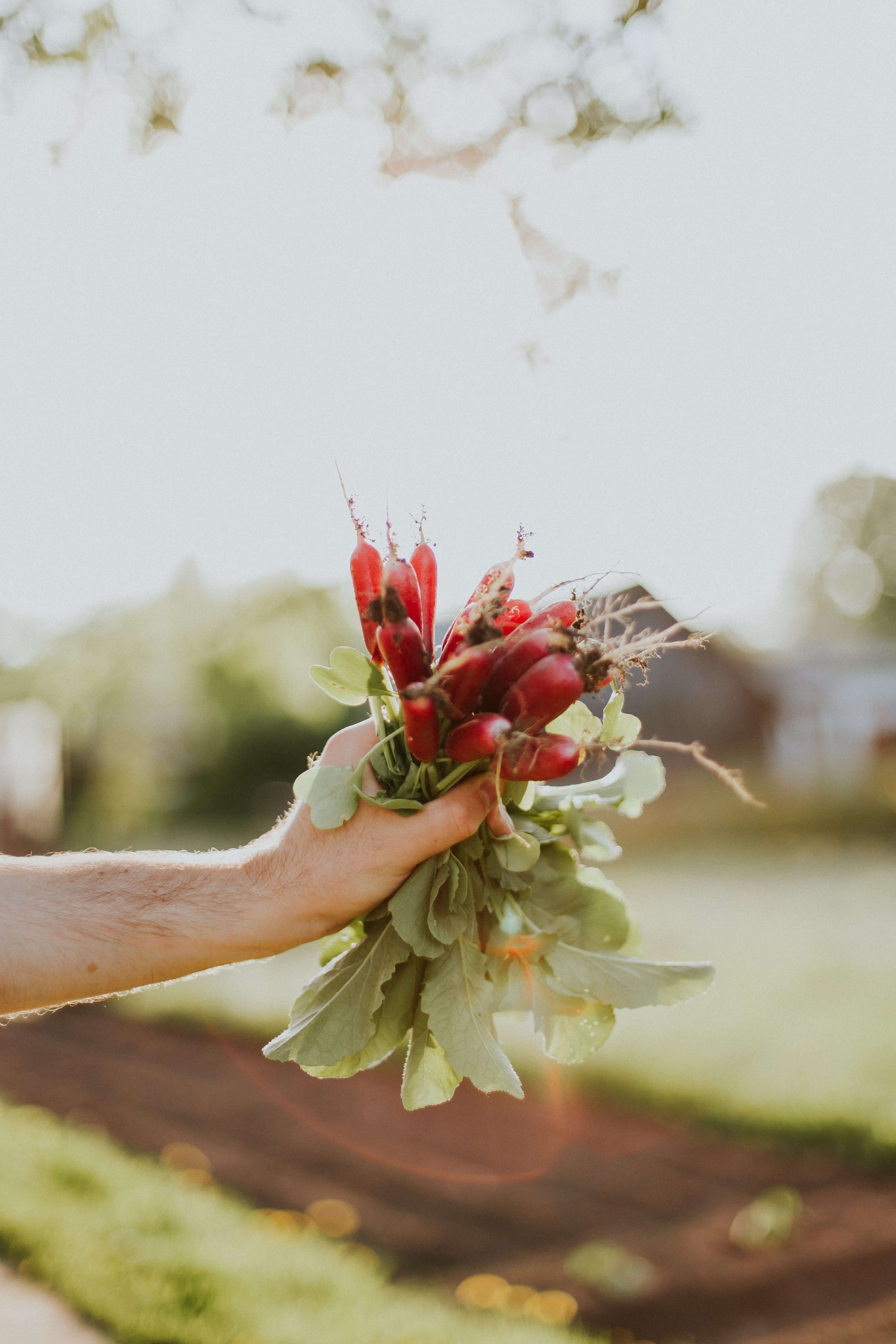“When radishes are in season, doctors should take a break.”
– Ancient Chinese proverb.
Beyond the round red radishes of vegetable platter past, the radishes that are available to us now boast wonderful shapes, sizes, colours and flavours. From black to white, pink to gem toned, these garden favourites pack more than just a colourful punch to a dish.
Long loved and utilized in Chinese food and food cures, (not to mention throughout ancient Egypt, Rome and Greece dating back to 2700 BC) the radish is often looked at as the Queen of health. Forget the apple, a radish a day can truly keep the doctor away.
Great at stimulating Qi flow, radishes keep things moving. And, when Qi is flowing, we feel good! Our metabolism is better, any pesky blockages are removed and our immune system functions better. Good circulation is key to good health.
Radishes directly impact the Liver/Gallbladder system and assists in the flow of bile, which aids digestion and our ability to break down fatty foods. They are known to reduce heavy or hardened deposits (think gall stones) and busting through sticky and congesting phlegm. This makes them great for clearing blocked sinuses, reducing productive coughs and helping with any excessive mucus condition in the body (think lipomas, cysts or asthma)
Because of it’s powerful affect on the digestive system as well as its ability to bust though congesting and sluggish fluids, radishes also make a great addition to the diet for anyone wanting to lose weight.
Radish flavours change only in their level of spiciness and this spiciness is determined by how long they take to grow. The longer the growth takes, the spicier the flavour. Neat right?
They should be harvested as soon as they are ripe so they have that lovely dense fresh crunchy factor. If they are left too long in the ground they’re more apt to become pithy and woody.
Cooked radishes lose much of their spicy heat and develop the consistency of a cooked apple.
Radish tops and leaves
Due to the fast growing radish, their greens are nice and fresh when harvested so you can store them exactly as you would spinach or a salad green.
They are high in Vitamin C, but also contain iron, phosphorous, folic acid, calcium, vitamin A and thianine.
Blanched, sautéed with garlic, eaten raw in salads or as a topper for noodles or copped to finish off a soup or add to a sandwich, radish leaves are an easy nutritious way to get the full benefits from the happy radish.
Ways to use radishes
- RAW Toss them over your mix of greens or just serve them as a side with dinner. Try them with a bit of fresh butter and course salt for a delicious snack or you can just snack on them straight from the garden too!
- Eat the sprouts–High in protein, but still with the same ‘busting through’ quality as the root, sprinkling a handful of these over cooked meals will help breakdown heavy fats and animal proteins.
- Soup or stews–The larger radishes are often used in soups and stews and are wonderful to help break down some fatty heavy dishes such as goulash or winter stews
- Stir-fry, grate, slice, grill or roast–Eat as is, toss them with salad greens, slice into sandwiches, throw into a stir fry or grill them on the bbq. You can also roast them. Whatever way you choose, these little colourful friends make a healthy zippy addition to any meal.
- Juice them – wonderful for those suffering from a phlegmy cough or blocked sinuses. This is like a power hose to help bust through some of those congesting situations.
- Blend them-If you are prone to seasonal allergies phlegm puree together radishes with a little vinegar, water and a little touch of raw honey. Sip on it throughout the day to release lung phlegm.
- Decoction – this is how we prepare food as medicine in TCM. By using concentrated amounts simmered for varying lengths of time depending on the plant we are able to extract maximum benefit and effect.

